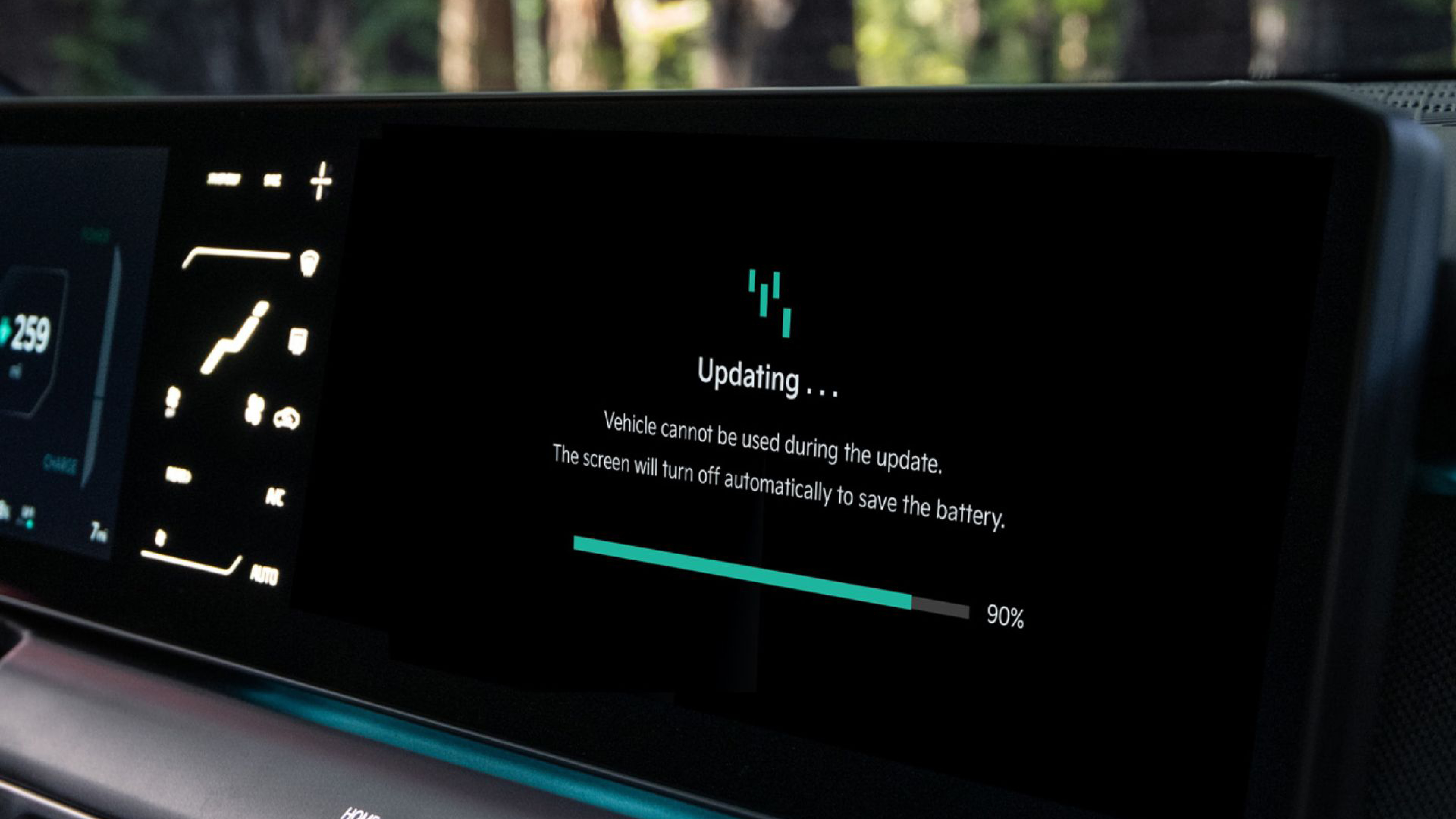
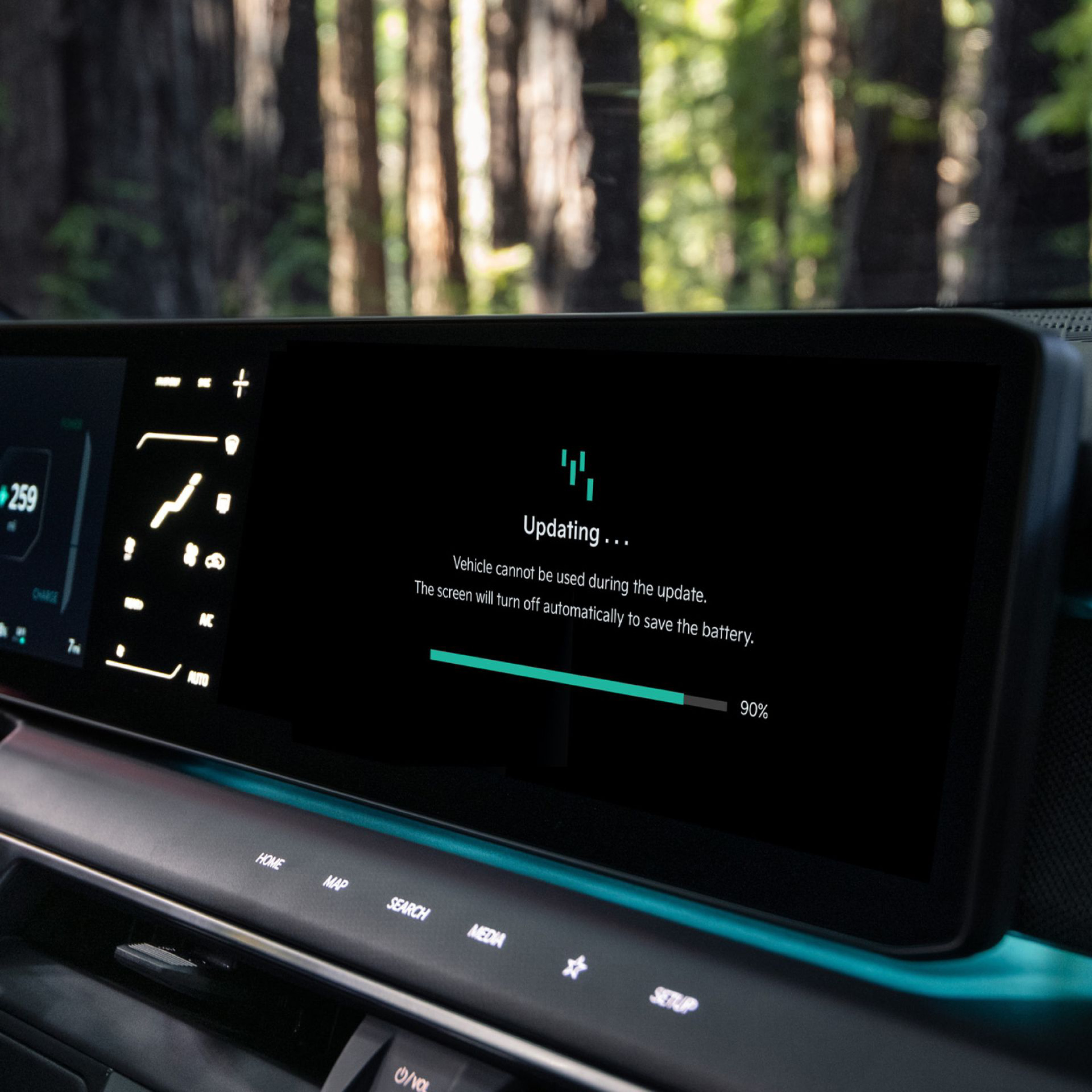


2025.05.23 Hyundai Motor Group
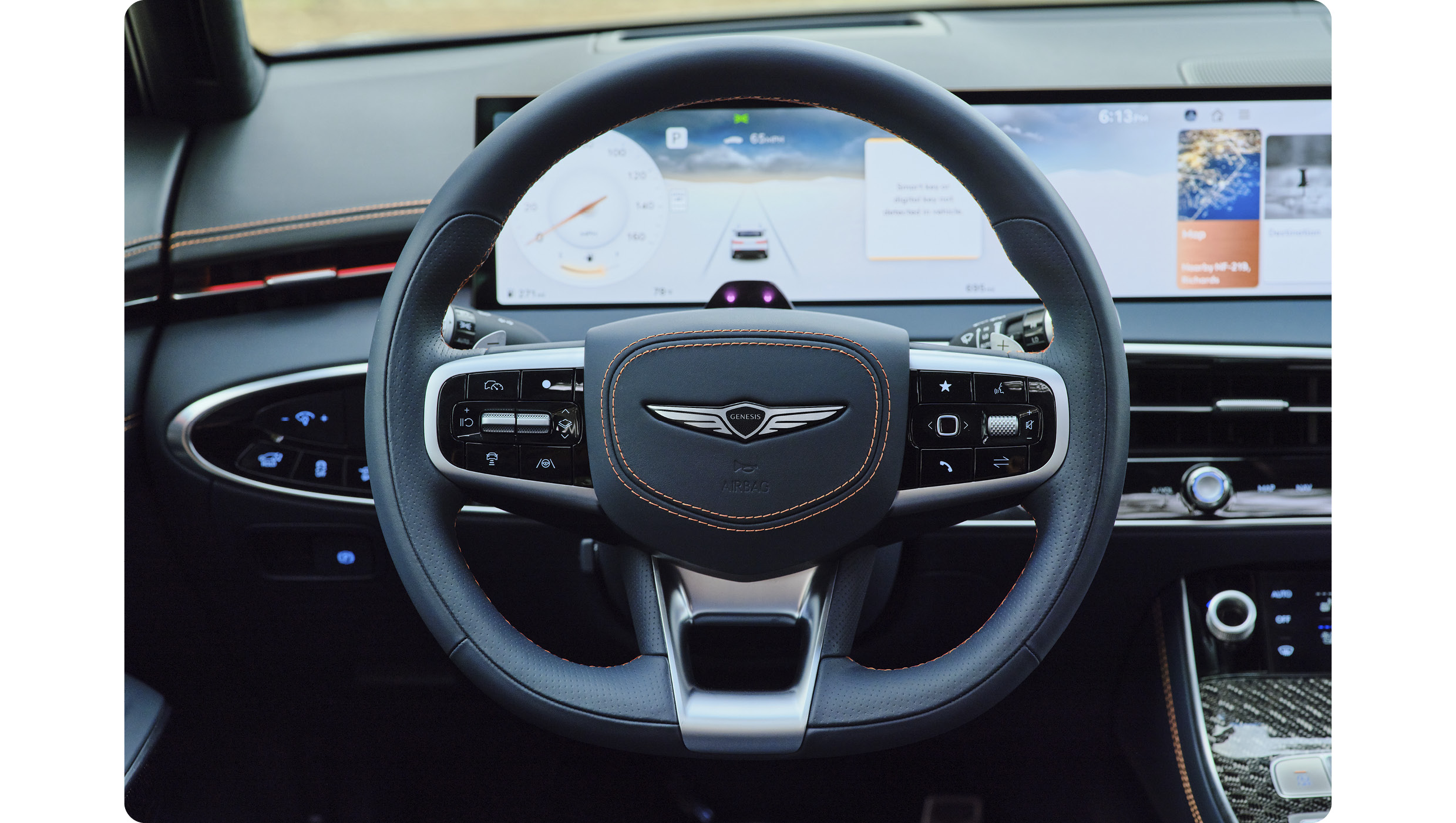
From the moment you get in your car and start the engine to the moment you get out of your car, as the driver, you face many different situations in the car. In every situation, your car will explain what’s happening through a notification, or ask you how you want to use a certain feature. You’ll then respond by operating that feature or pressing a button accordingly. As it turns out, you and your car are having a lot of conversations.
With all the convenient features, electrified powertrains, autonomous driving, and other cutting-edge technology, cars are transforming from a simple means of transportation into a new living space for people. This shift in the concept and purpose of cars has broadened the user experience (hereinafter “UX”). Now, we even interact with our cars when we’re not inside them, via smartphone apps — meaning there are more areas of communication between you and your car than ever before.
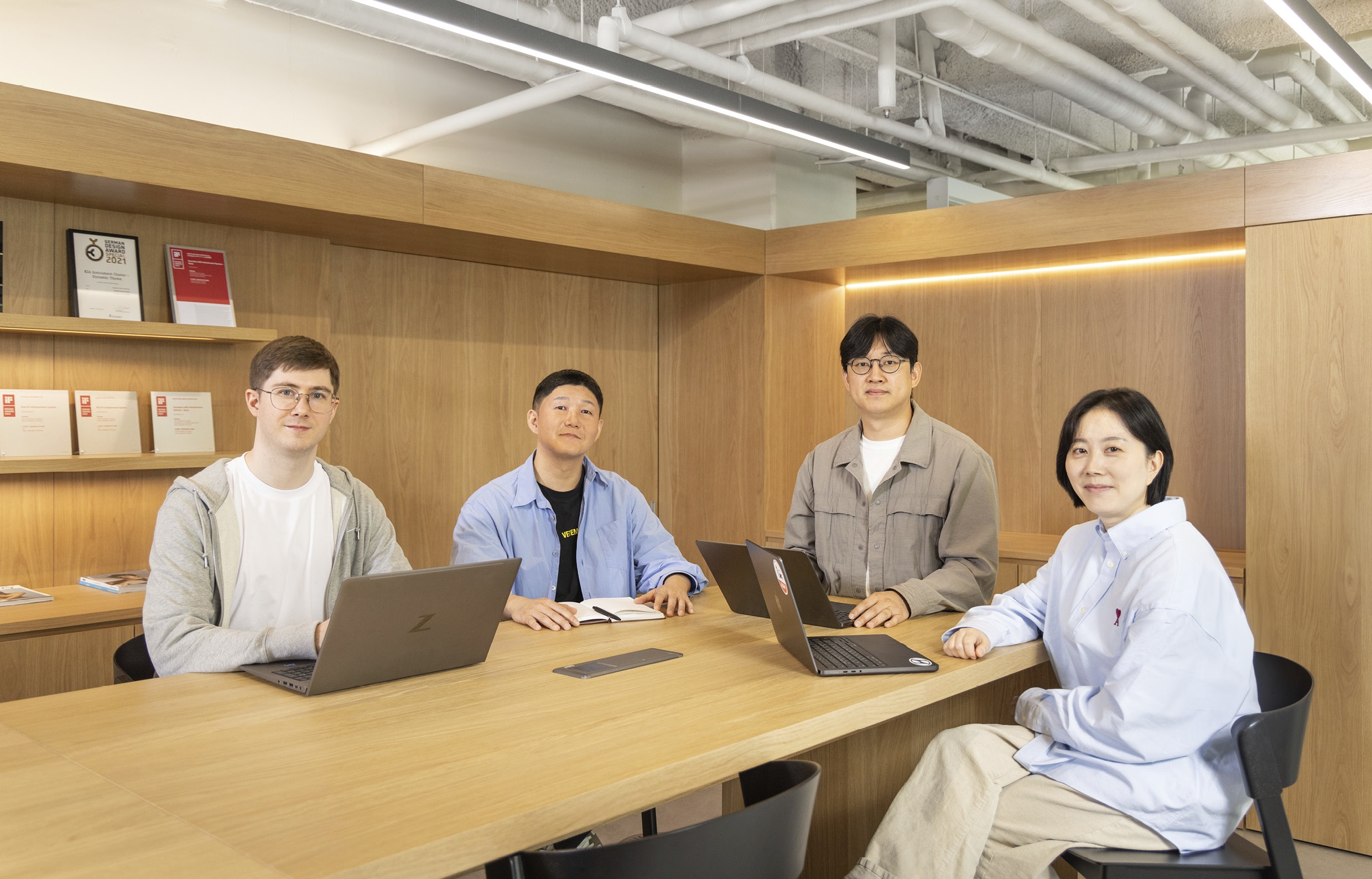
In this process, the text that appears on the screen of a car’s infotainment system has become increasingly important. Cars need to provide functional and technical information in a way that’s easy and concise for the driver to understand, and help them quickly recognize what they need while driving. This is why UX writers, who are responsible for all the text that goes into a car’s interface, have been gaining attention. We caught up with Senior Research Engineer Dong-Hyun Lim, Research Engineer Ki-Hye Jang, Research Engineer Liam Slater, and Research Engineer Moo-Sung Kim, who work as UX writers on the Hyundai Motor Group Infotainment UX Development Team, to talk about the familiar yet unfamiliar world of user experience writing (UX writing).
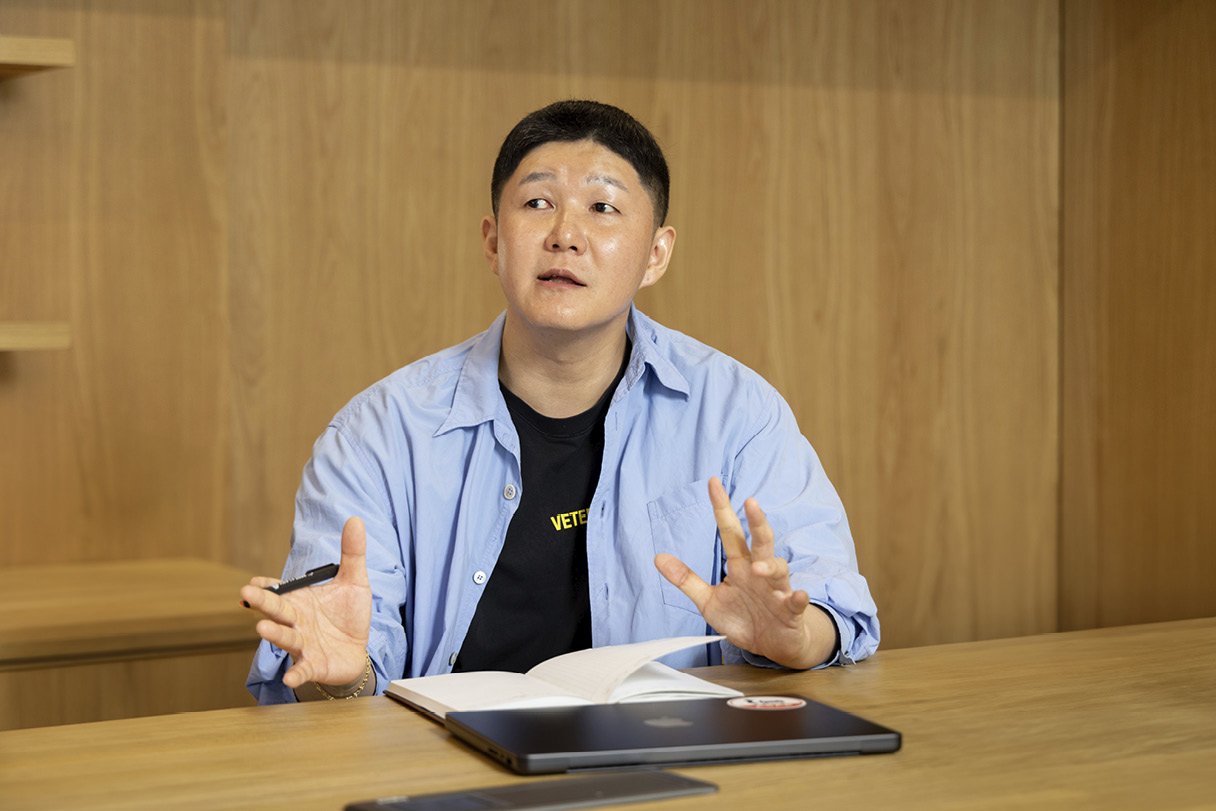
Q. Please introduce us to the concept of UX writing.
Dong-Hyun Lim, Senior Research Engineer | UX writing refers to the writing and management of the text (including sentences, words, etc.) that users see and read when they interact with a product or service. UX writers are the professionals who do this. Their role is to provide information or guide users through the features and functions of a product in text so that users understand its function and purpose and can use it well.
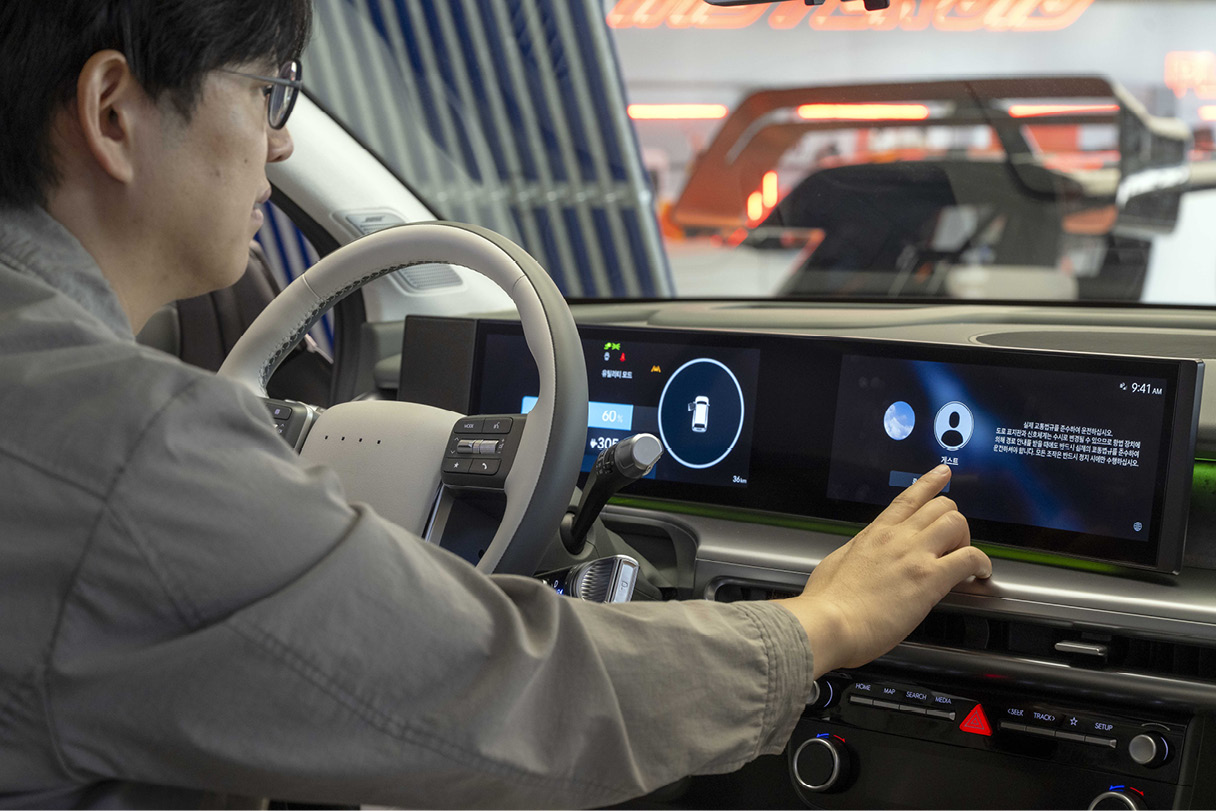
However, UX writing isn’t just about being a good writer. It’s also about finding the right words and phrases that clearly communicate the purpose of a product or service in a way that matches the user’s level of understanding. In other words, it’s about thinking like both a user and a developer. It also requires constant communication with developers based on customer feedback, which is why we like to refer to UX writers as “the bridge between users and developers.”
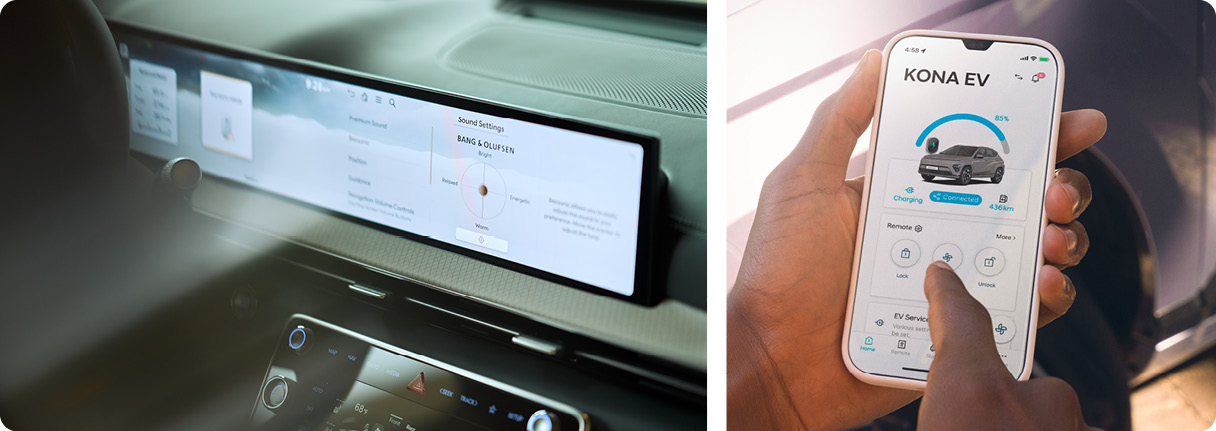
Q. What kind of UX writing do drivers typically see in cars?
Dong-Hyun Lim, Senior Research Engineer | Most of the text we encounter in the car is in the realm of UX writing, like the infotainment system, the mobile app on your phone, or messages directed at customers. Basically, you can think of all the text on the screen as UX writing, including menus that list your car’s features, help messages that communicate relevant options and details, buttons you press to start and stop features, pop-ups that inform or warn you about the status of your car, and more.
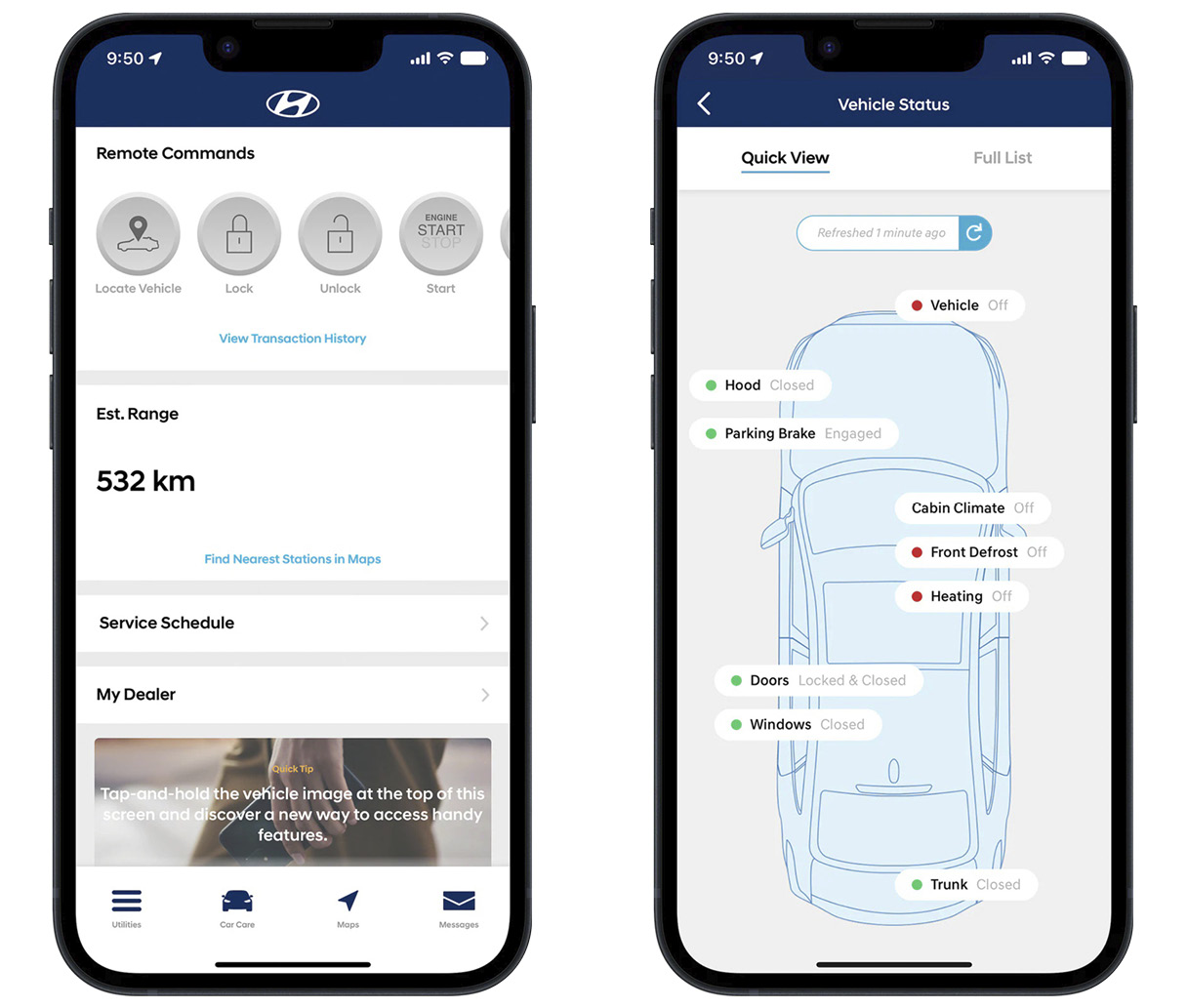
Q. What are the biggest differences between UX writing in IT services and UX writing in automotive industry? Also, what are the most important things to consider when writing text?
Moo-Sung Kim, Research Engineer | Let’s compare the infotainment system to a mobile app operated by an IT service. They both have the same goal: to help users efficiently navigate the various features included in the app and easily get the information they need. However, in IT services, branding and marketing are often integrated as a cross between UX writing and copywriting. For this, writers tend to play a lot with tone and manner. For example, you’ll often see text with a friendly tone, such as “Improve your experience by doing this.” or “Try doing this.” to pique the user’s interest, and it’s not uncommon to see special messages or witty suggestions depending on the context of use.
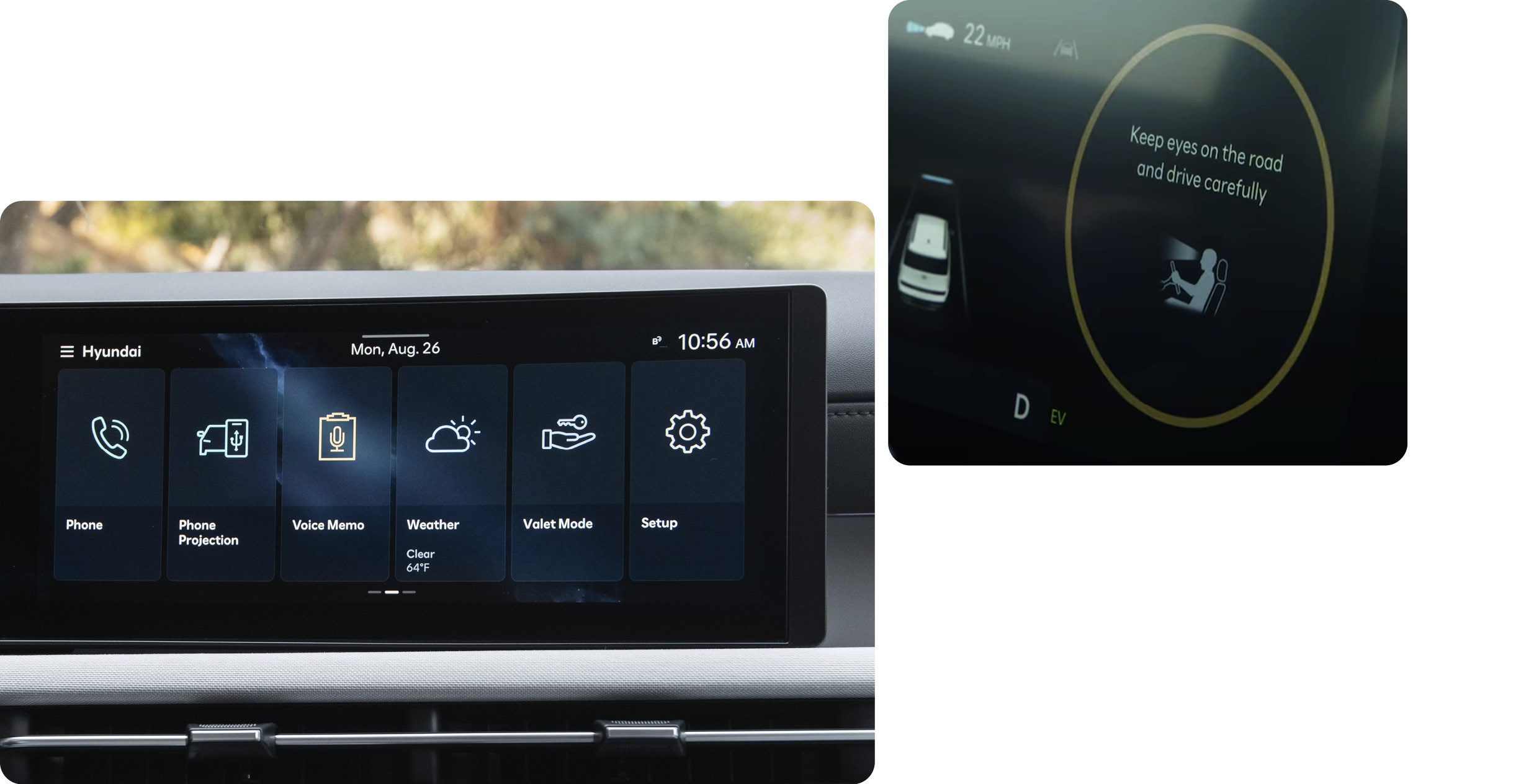
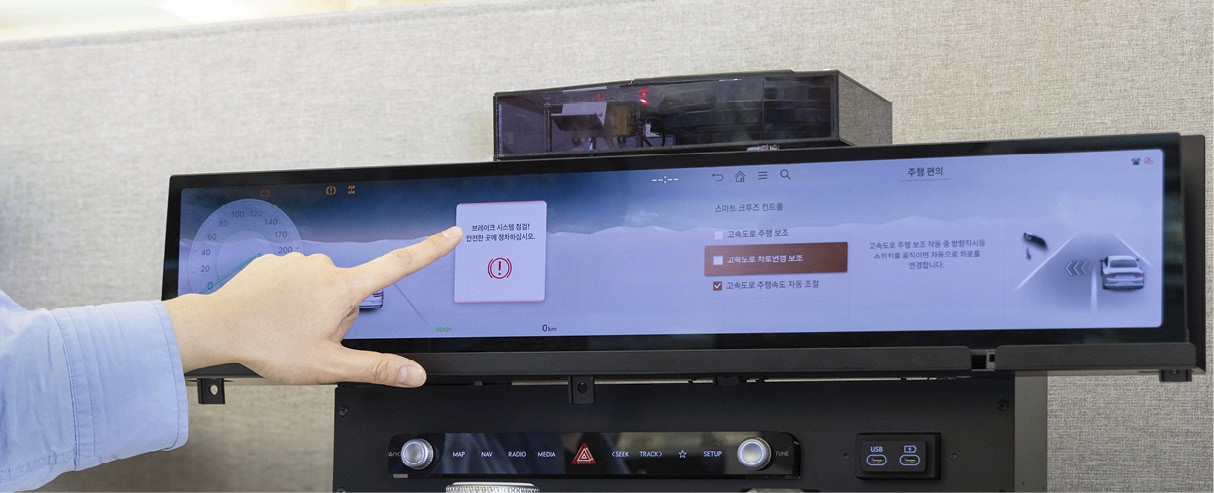
UX writing for car infotainment systems, on the other hand, tends to be more formal and serious. This is due to its interdisciplinary nature and its direct connection to driver safety. The text must be written to ensure that, at every stop, turn, or acceleration, the driver can immediately grasp what is happening—and what will happen next. To achieve this, automotive UX writing adheres to three principles: accuracy, consistency, and conciseness.
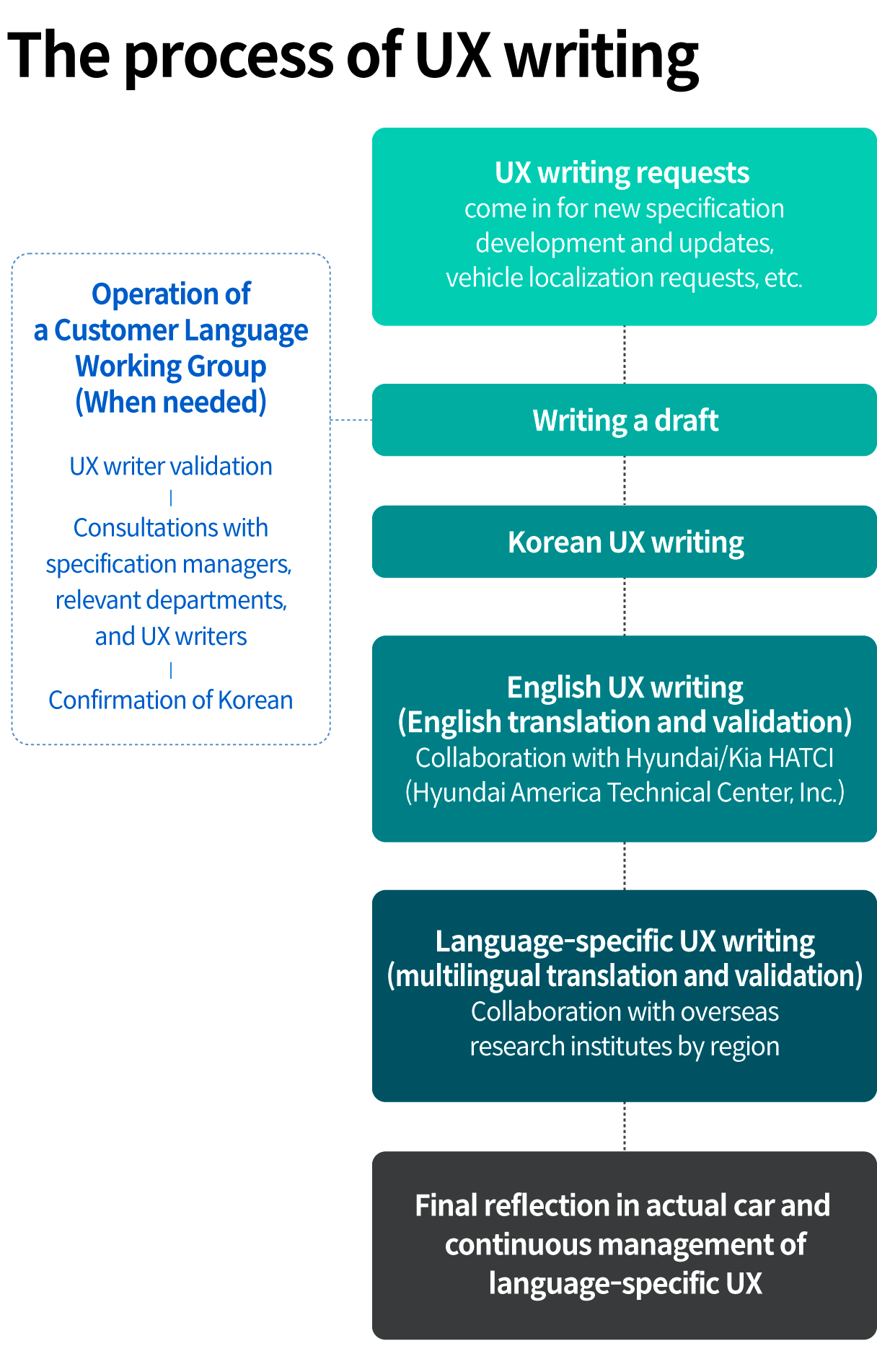

Q. What are some ways to communicate specialized and technical automotive content to users in an easy and convenient way?
Dong-Hyun Lim, Senior Research Engineer | Since cars have a mix of cutting-edge technologies, they do have their fair share of technical jargon. So, we need to make sure that these terms are easy and intuitive for anyone to understand while driving.
That’s why our UX writers use a company-wide validation process called the Customer Language Working Group to ensure our communication remains clear and accessible. In this process, all relevant departments collaborate to make automotive terminology more user-friendly. From the developer’s perspective, we take complex technical names and either refine them to better reflect the development intent and purpose, or validate them with more intuitive alternatives that clearly convey their meaning.
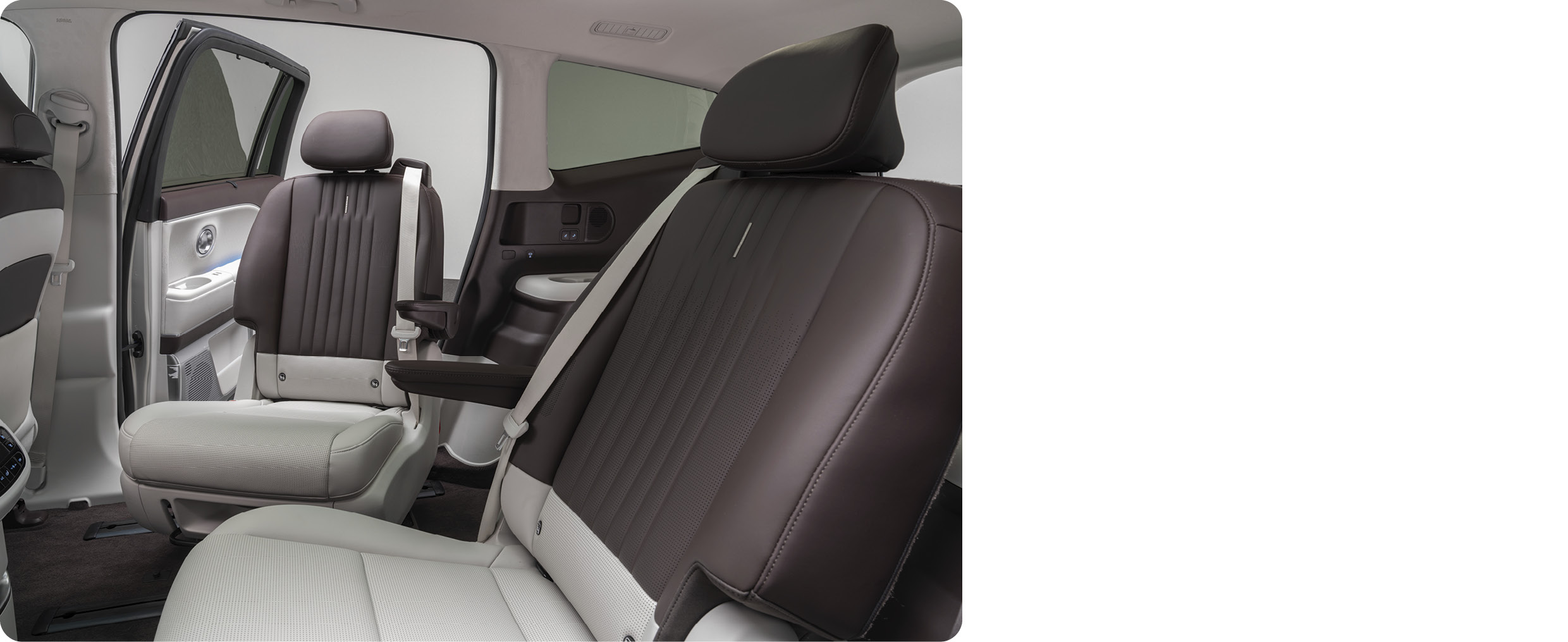
Q. Are there any memorable examples of new terms created through the Customer Language Working Group?
Liam Slater, Research Engineer | A great example of this is “Seat Rotation.” Originally known as the “Swivel Seat,” we realized that the word “swivel” was a little hard for our Korean customers to intuitively understand, and that there were better options for non-English speakers, so we needed to change it.
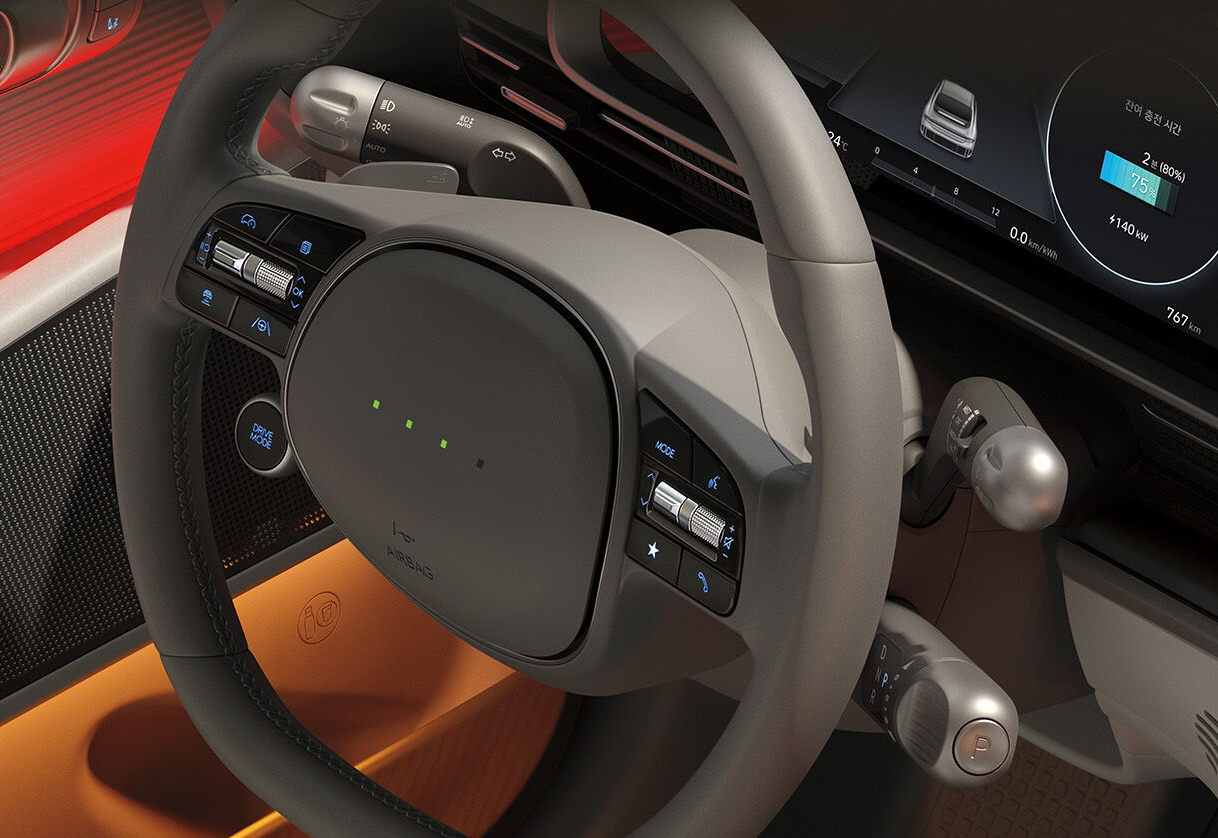
We often received feedback that the term “Active Light", was also difficult to understand right away. So, we changed it to the more intuitive term “Reactive Ambient Lighting” so that users could understand what the feature was immediately, even if the term became a bit longer. This revised term will soon be applied to product introduction pages and infotainment system screens, so I think you’ll find it interesting to check it out the next time you get into a car.
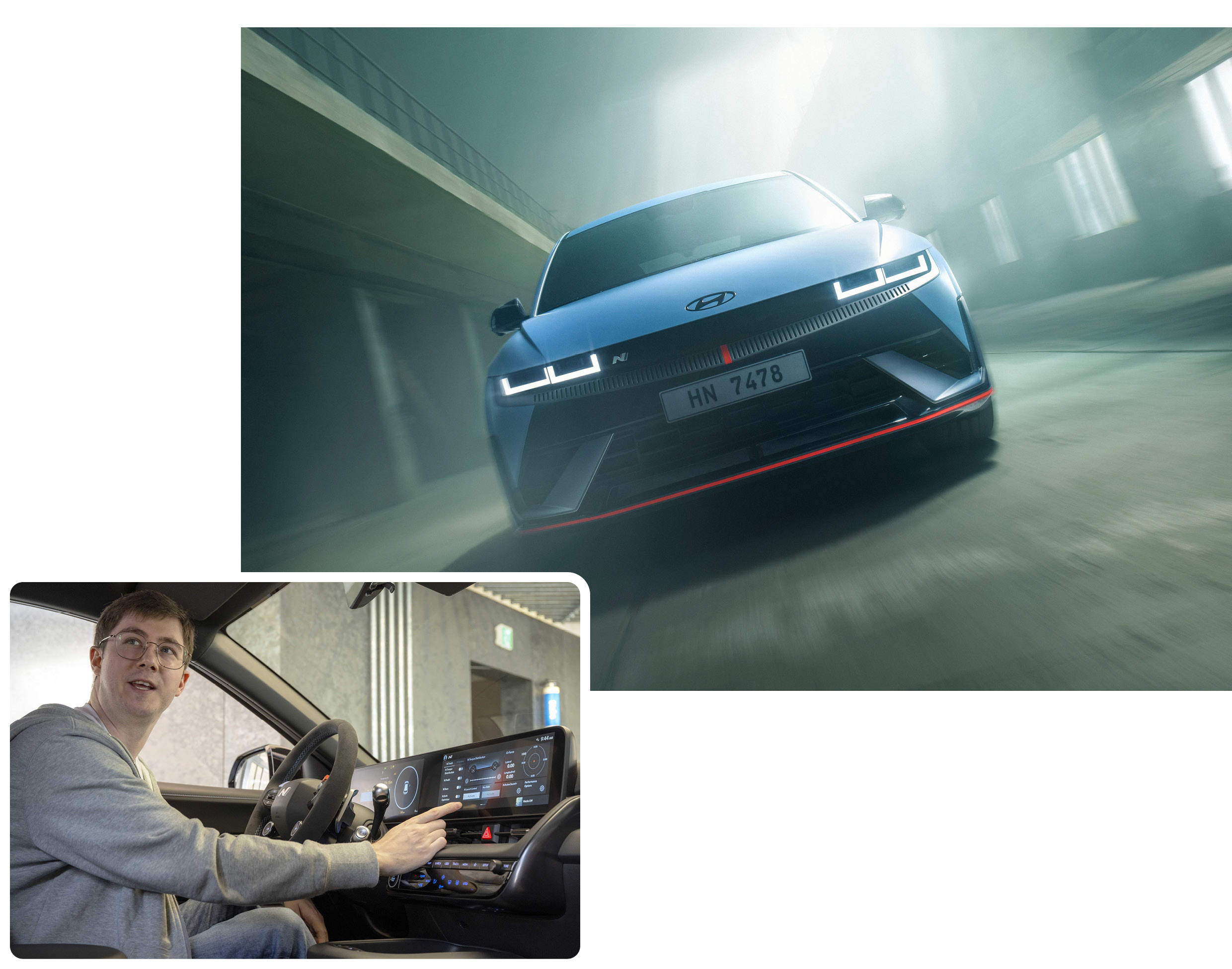
Q. Does the text or technical terminology vary depending on the car’s features or target customer?
Liam Slater, Research Engineer | Generally, most of the text displayed on the infotainment system screen is shared across the lineup, so there’s little variation between models. However, Hyundai’s N lineup is an exception to this. For example, English terms and descriptions of high-performance-specific technologies such as “N e-Shift” and “N Torque Distribution” on the IONIQ 5 N tend to be used in our Korean text as well.
The majority of customers looking for N models usually have a basic knowledge of high-performance cars and motorsports, so we didn’t need to make any major improvements to the terminology. In fact, we believe these terms enhance immersion for N model owners in the driving experience. Another major reason for this was that the Hyundai N lineup has a high proportion of sales in global markets.
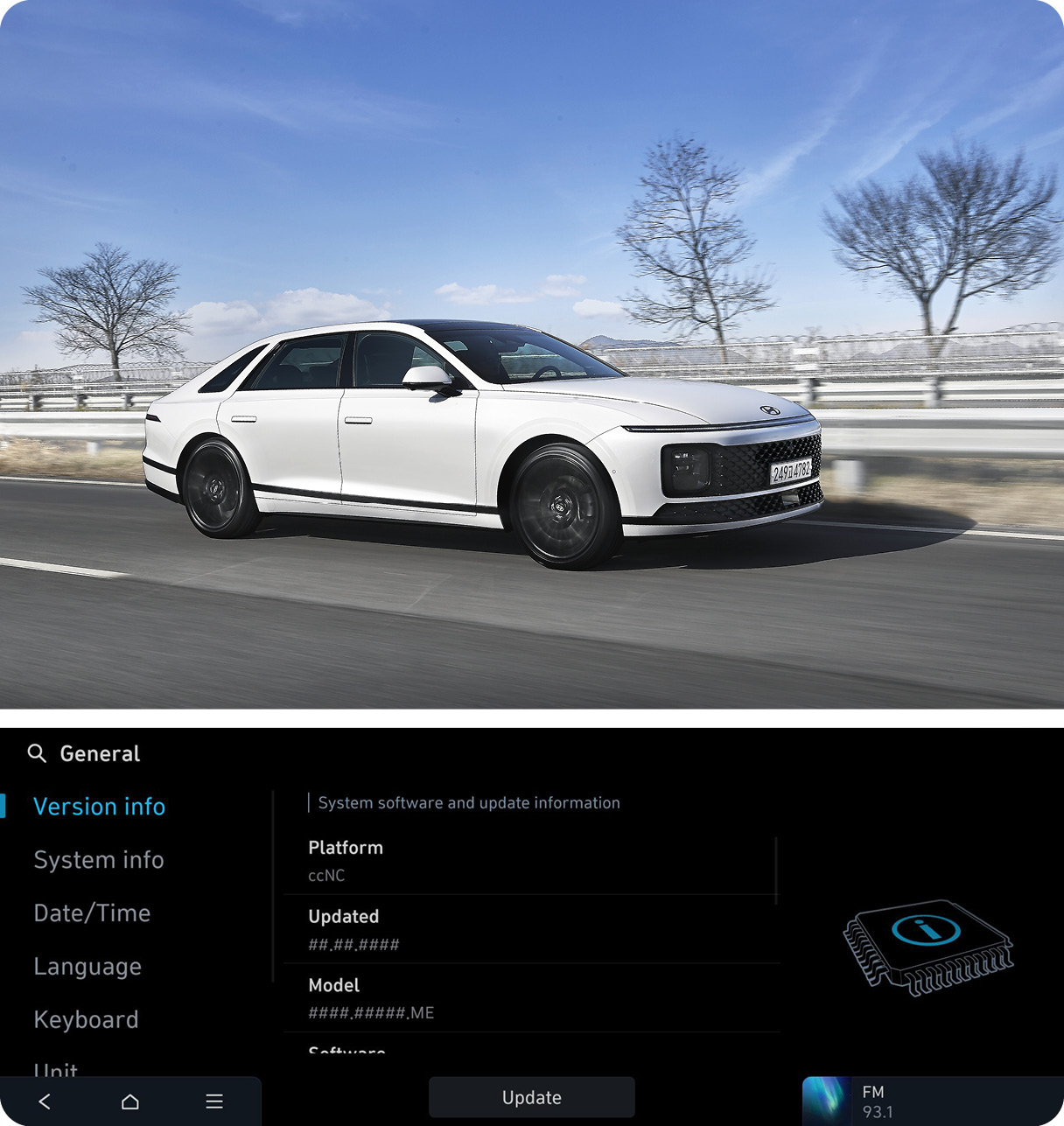
Q. When did Hyundai Motor Group fully introduce UX writing? What were the improvements before and after this?
Moo-Sung Kim, Research Engineer | It actually hasn’t been that long since the role of UX writers was established in Korea for general service apps. The need for UX writers in Korea increased as customer experience, or UX, became more important in the industry overall. Hyundai Motor Group fully introduced UX writing when developing the ccNC (connected car Navigation Cockpit), an infotainment system with various connected car service features.
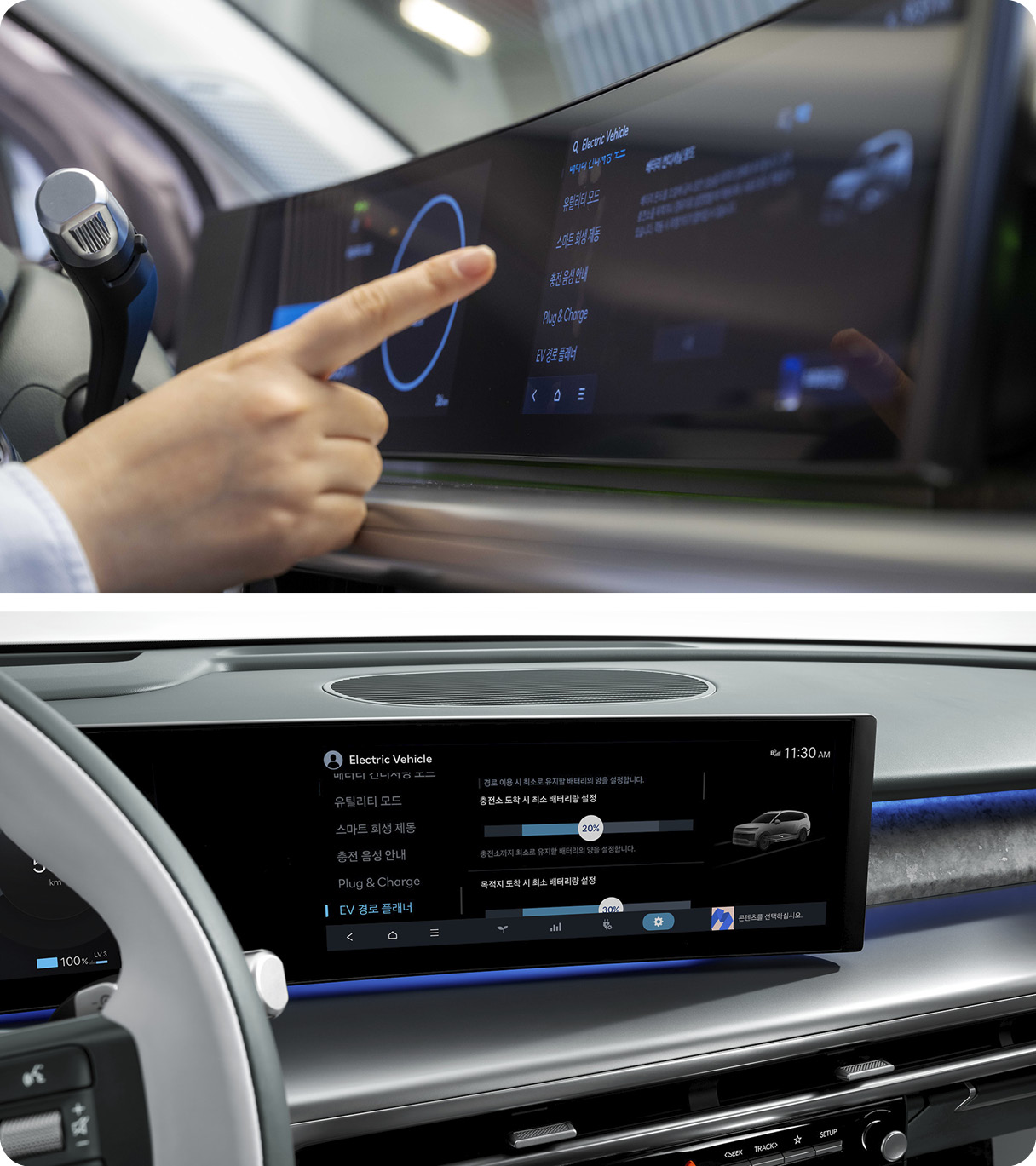
Liam Slater, Research Engineer | Before we had UX writers, most of our text was written from a technical development perspective, so there was a lot more technical and complex language than there is now. This made it difficult for customer-facing departments like sales, marketing, and mobile app development to work. Other relevant internal departments and business partners often referred to the same feature using different terms.
However, many of these challenges have been resolved as Hyundai Motor Group has put together a dedicated UX writing team and improved the text that makes up the UX and user interface (UI) from the user’s perspective. In particular, processes such as the Customer Language Working Group have made terminology more intuitive and consistent, which naturally resolves issues like the example above.
In UX writing, it’s also important to keep track of how terms and phrases have been modified. Previously, the history of such modifications was managed only through email, Excel, and different messenger apps, so it wasn’t reflected quickly or sometimes went missing. With the introduction of UX writing, we started using an online server-based history management tool, and the speed and accuracy of communication between UX writers and related departments has increased significantly.
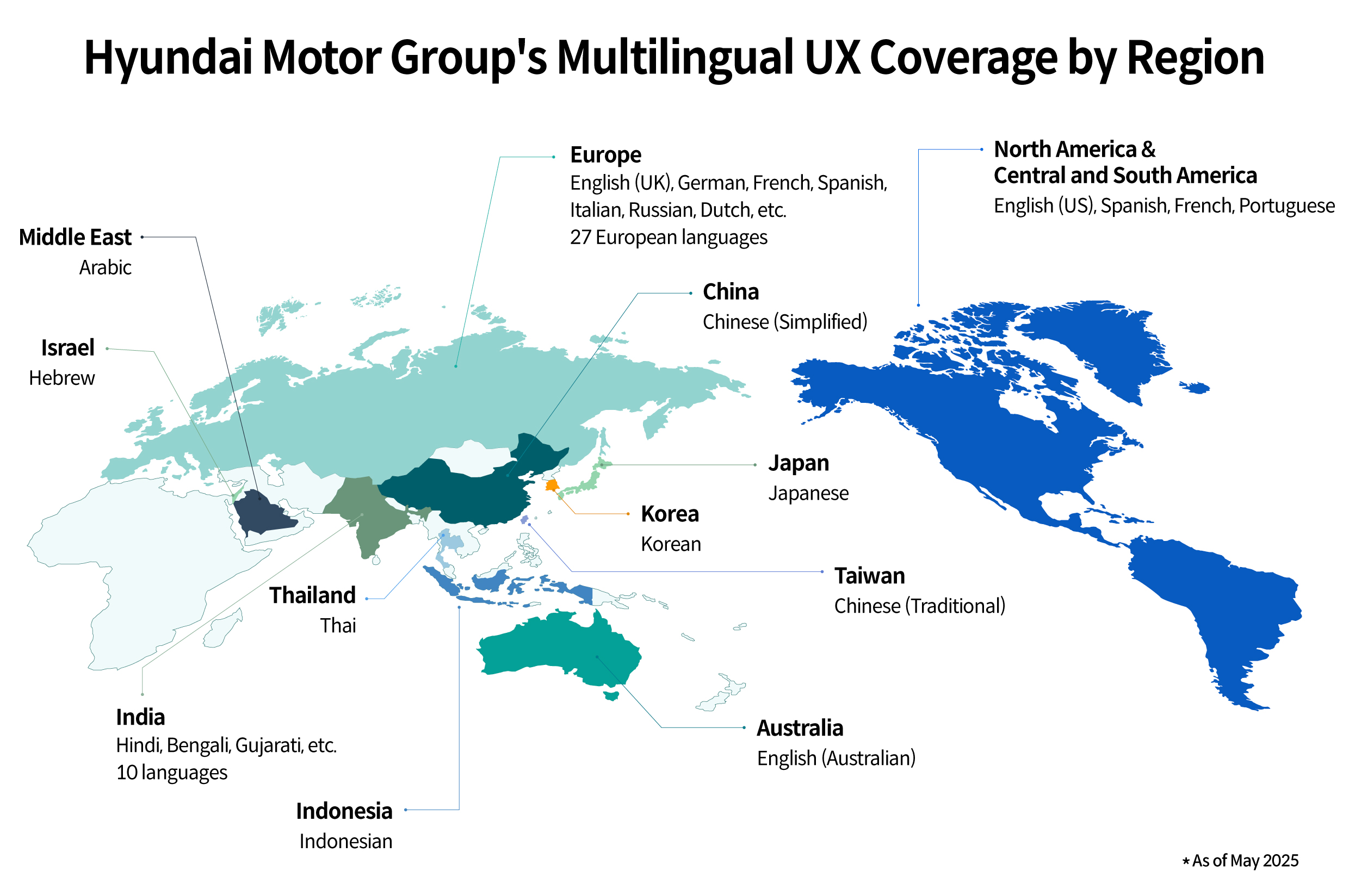
Q. As Hyundai Motor Group is present in various global markets, the localization process of infotainment systems and mobile phone apps seems to be important. What is the role of UX writers in this regard?
Liam Slater, Research Engineer | Hyundai’s UX text is translated into about 50 languages in the global market. This includes Korean, the primary language, and English, which serves as the base for translations. We also need to localize for each market to help local users interact with their cars seamlessly.
Just as our head office UX writers write and verify user-friendly texts in Korea, our major overseas labs also have local UX writers who localize texts to be translated for their markets. In Korea, we receive multilingual translation and localization requests from these overseas labs, and we also support the timely and accurate communication between Korean developers and local UX writers.
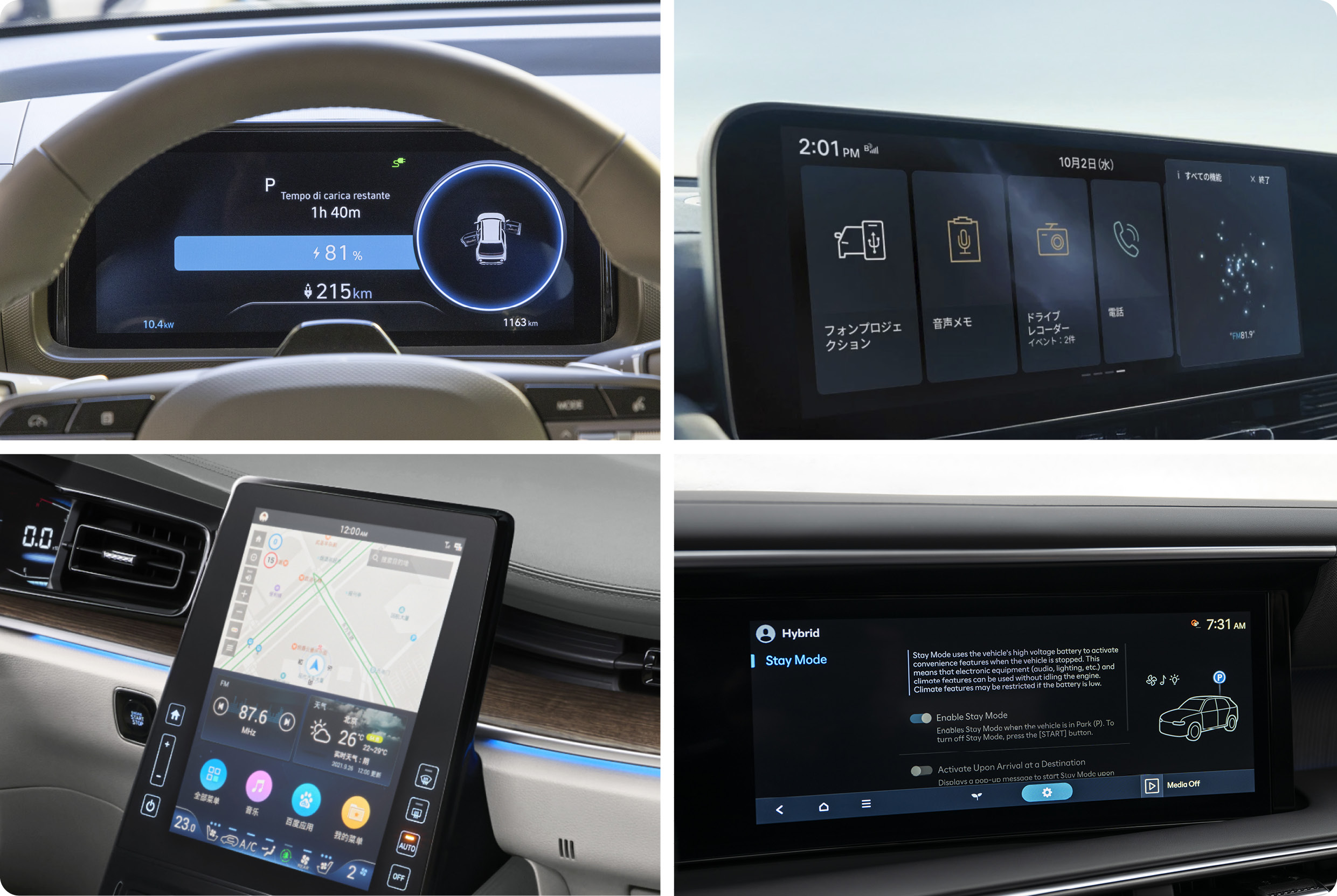
Q. What are the most important things to consider during the localization process?
Ki-Hye Jang, Research Engineer | Text in cars is often directly related to user safety, so every translation needs to be validated for each country’s road conditions and vehicle specifications. In addition, local legislation and usage environments can change before the launch of a new car or a regular software update, which may change what needs to be communicated to customers. It’s important to communicate with UX writers in overseas labs to ensure that UX text is written and revised in a timely manner to meet these timelines.

Q. What are some of the challenges of working in multiple languages?
Ki-Hye Jang, Research Engineer | With 50 languages to translate and review, the process is often complicated. If the original text changes mid-translation, we have to start the translation again from scratch, or if a new word is ad-ded, the entire translation has to be done over. Each language also has its own specific characteristics, like periods and line breaks.
Since the multilingual translation and review process is carried out by language-specific reviewers working in overseas labs, we also have to take into account time differences in order to communicate smoothly. To solve such issues, we’re constantly improving our translation and review process to simplify and efficiently streamline the system. Recently, we’ve introduced a new tool that utilizes online servers to enable faster and more accurate multilingual work.
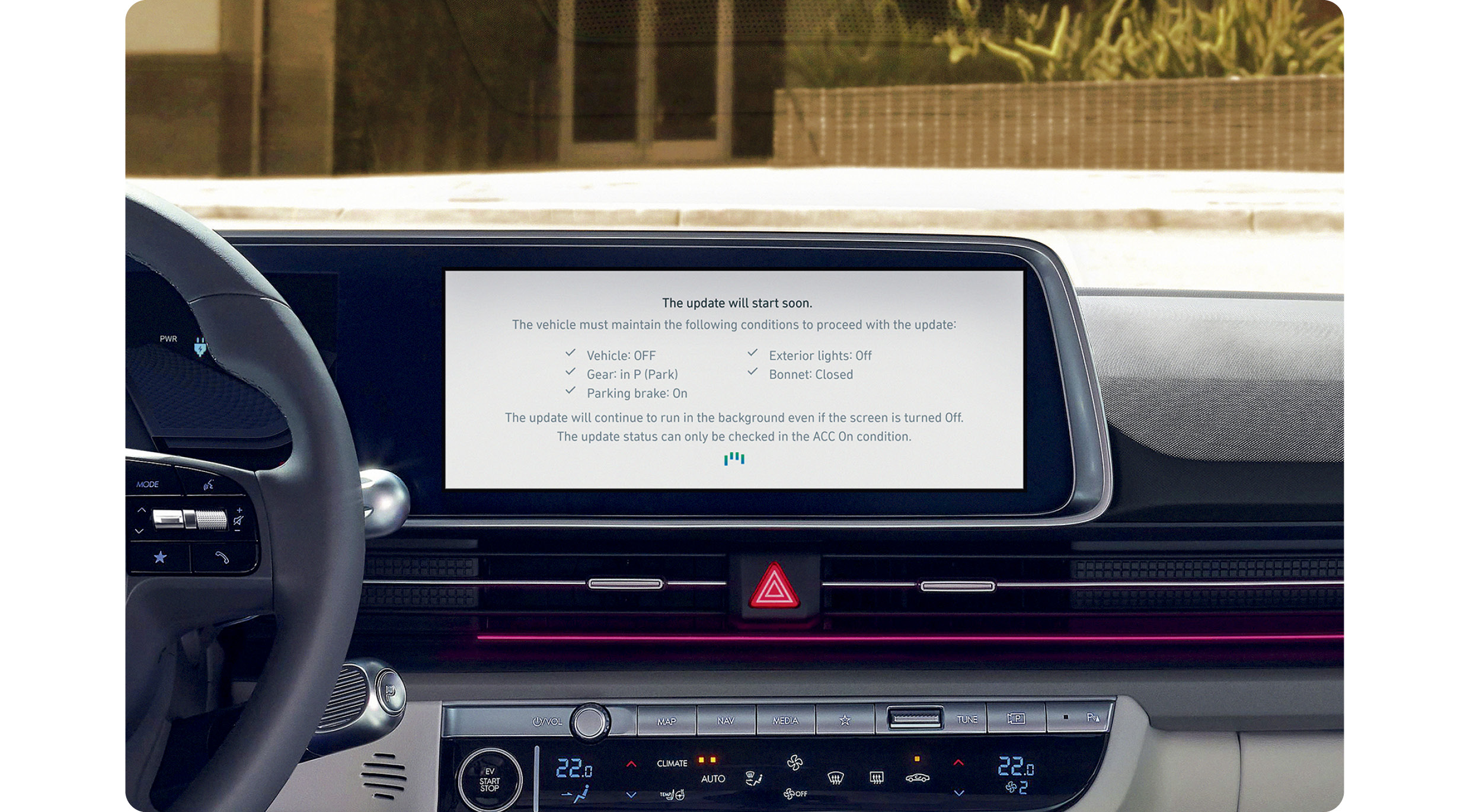
Q. Do you utilize AI in your UX writing or translation processes? Do you think AI will be able to replace UX writing jobs in the future?
Liam Slater, Research Engineer | Honestly, we don’t use AI very often in the writing or translation processes. We’ve done a lot of testing with AI, and while it’s very good at drafting text and basic translation of languages, it’s not always able to smoothly complete terms and sentences for users, or translate perfectly to fit the local context. Even if AI assists in drafting or translation, the final polishing still rests with UX writers.
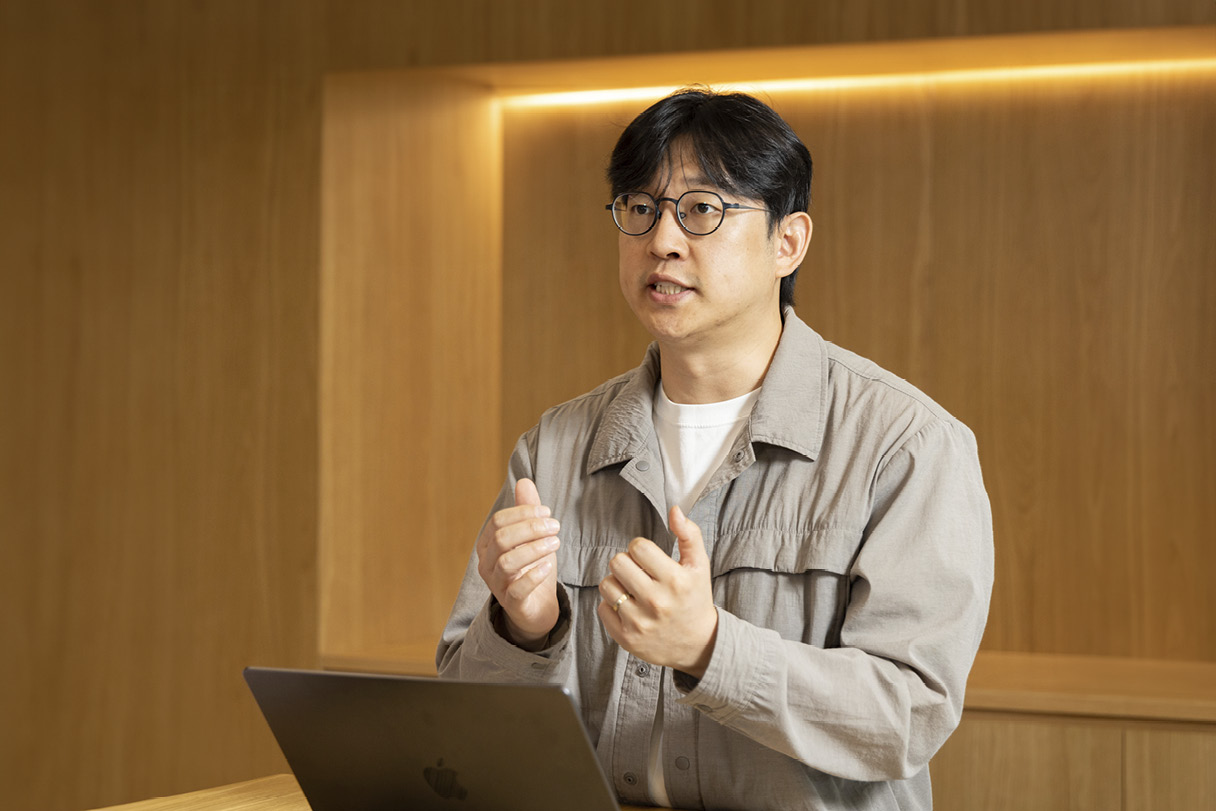
Q. What are the job competencies that a UX writer should have?
Moo-Sung Kim, Research Engineer | I think it’s important to have a basic understanding of UX. Unlike copywriters or writers who write advertising copy, PR materials, or marketing content, UX writers write text that helps people use a product. Good communication skills are also important, as it’s important to communicate with UX specification developers and developers from various relevant departments for text writing and related discussions.
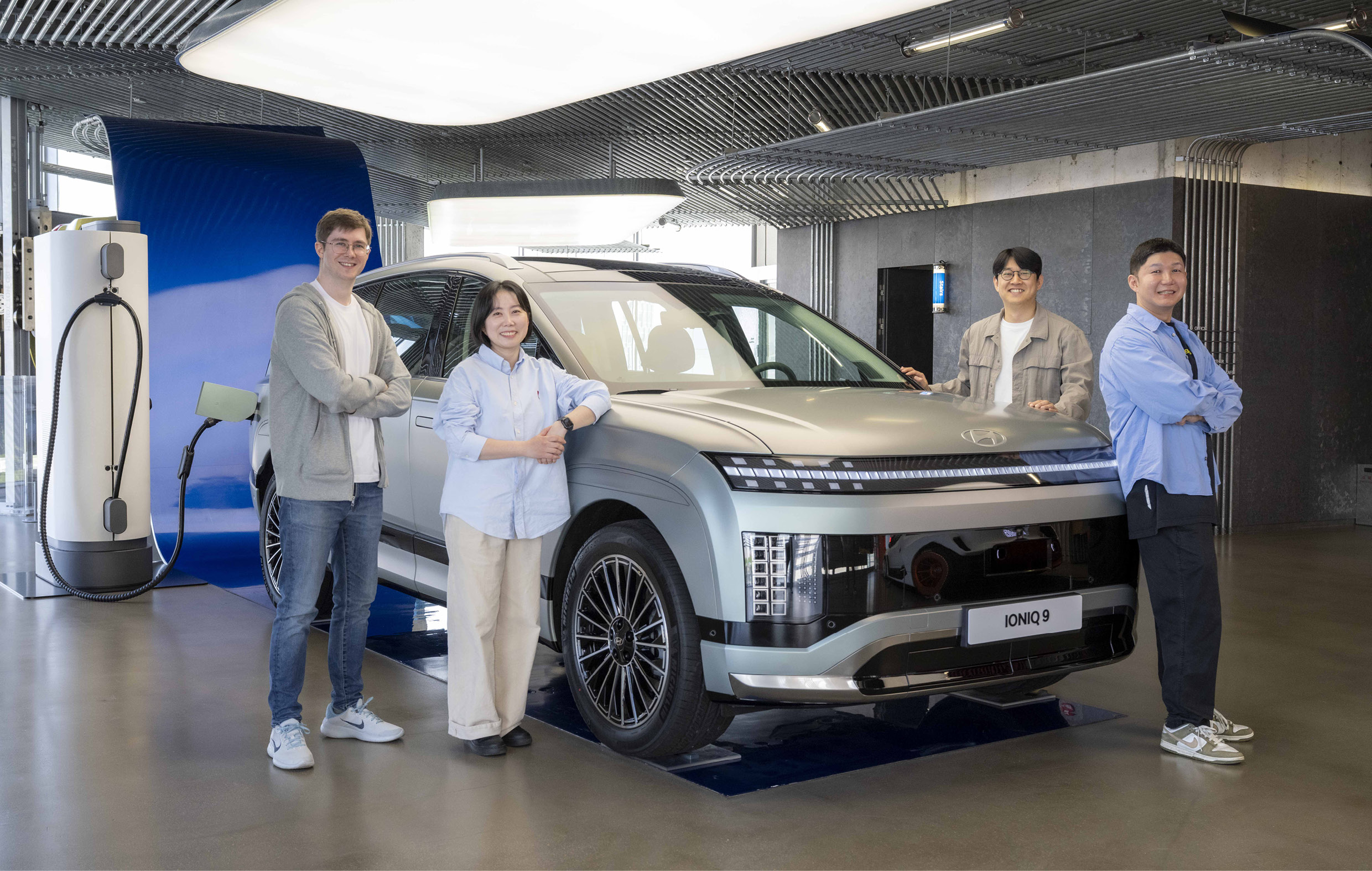
Q. Do you have any final words you’d like to emphasize about UX writers, or any advice for aspiring UX writers?
Dong-Hyun Lim, Senior Research Engineer | I think the most important thing is curiosity. I’d argue that being a UX writer is for people who are always asking and answering the question, “Why did they make this product this way?” about the interfaces of things they encounter every day. If you’re interested in this job, I’d recommend reading books and attending conferences and courses to learn more about UX writing. Networking with current UX writers will also help.

In April, Hyundai Motor Group held the “2025 Global UX Writers Conference” for UX writers in Korea and overseas. UX writers from the Infotainment UX Development Team and research engineers in charge of translation and review at major local labs in Europe, India, China, Japan, and Indonesia gathered to exchange opinions. We asked UX writers at the conference questions about the translation and localization processes.
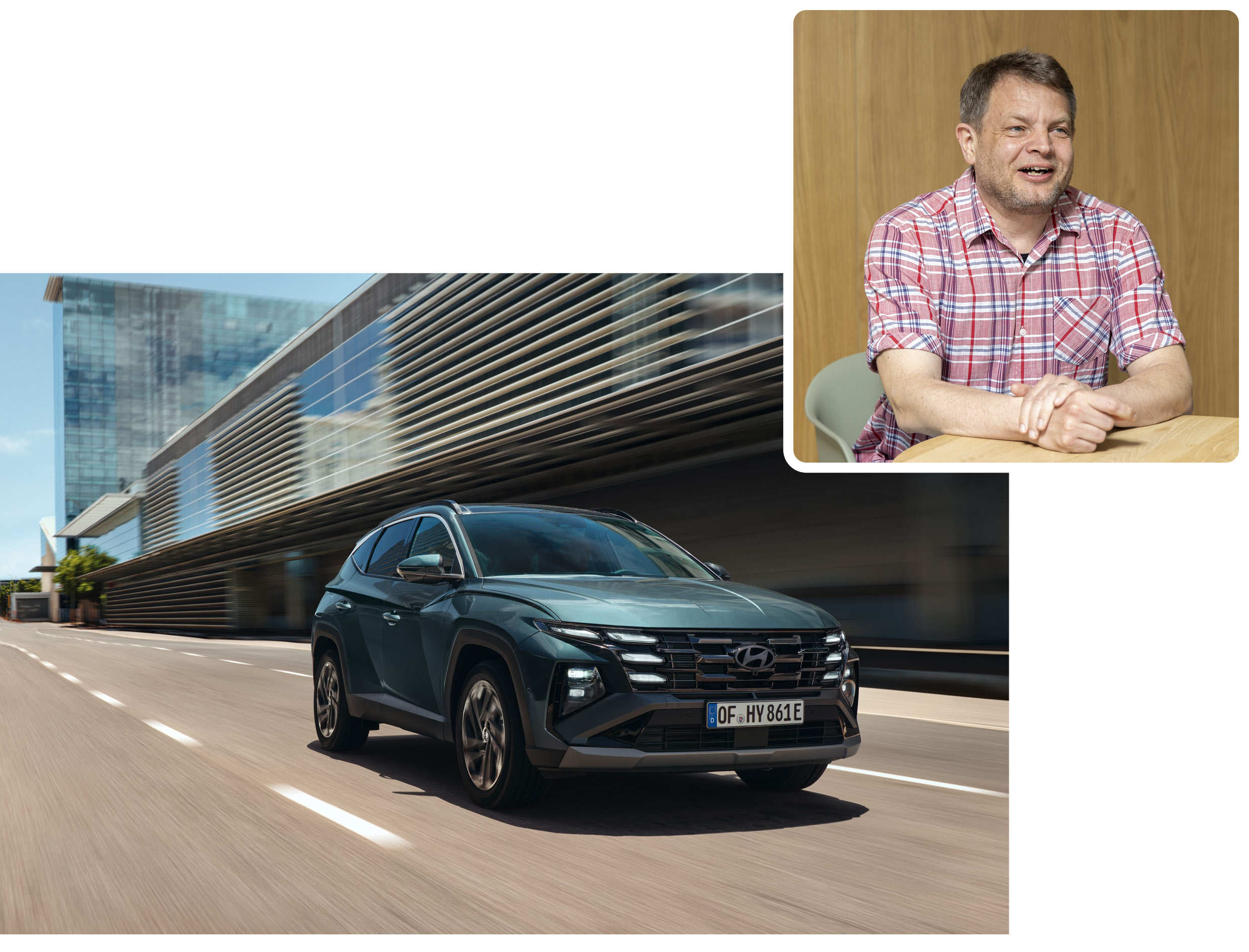
Q. I understand that the European market is made up of many different countries, so there are many language and cultural differences. As a UX writer at the European lab, have you noticed any significant differences in translation and localization?
Uwe Meinz, Senior Research Engineer (HMETC, Hyundai Motor Europe Technical Center) | There are a few instances where grammar and nuances vary quite a bit from language to language. Scandinavian languages, such as those spoken in Denmark, Sweden, and Norway, are characterized by their relative lack of formality compared to English. For example, the phrase “Please update the map” in English translates to “Uppdatera kartan” in Scandinavian languages. This omits the English equivalent of “Please,” so it’s interesting to note that this isn’t considered rude locally.
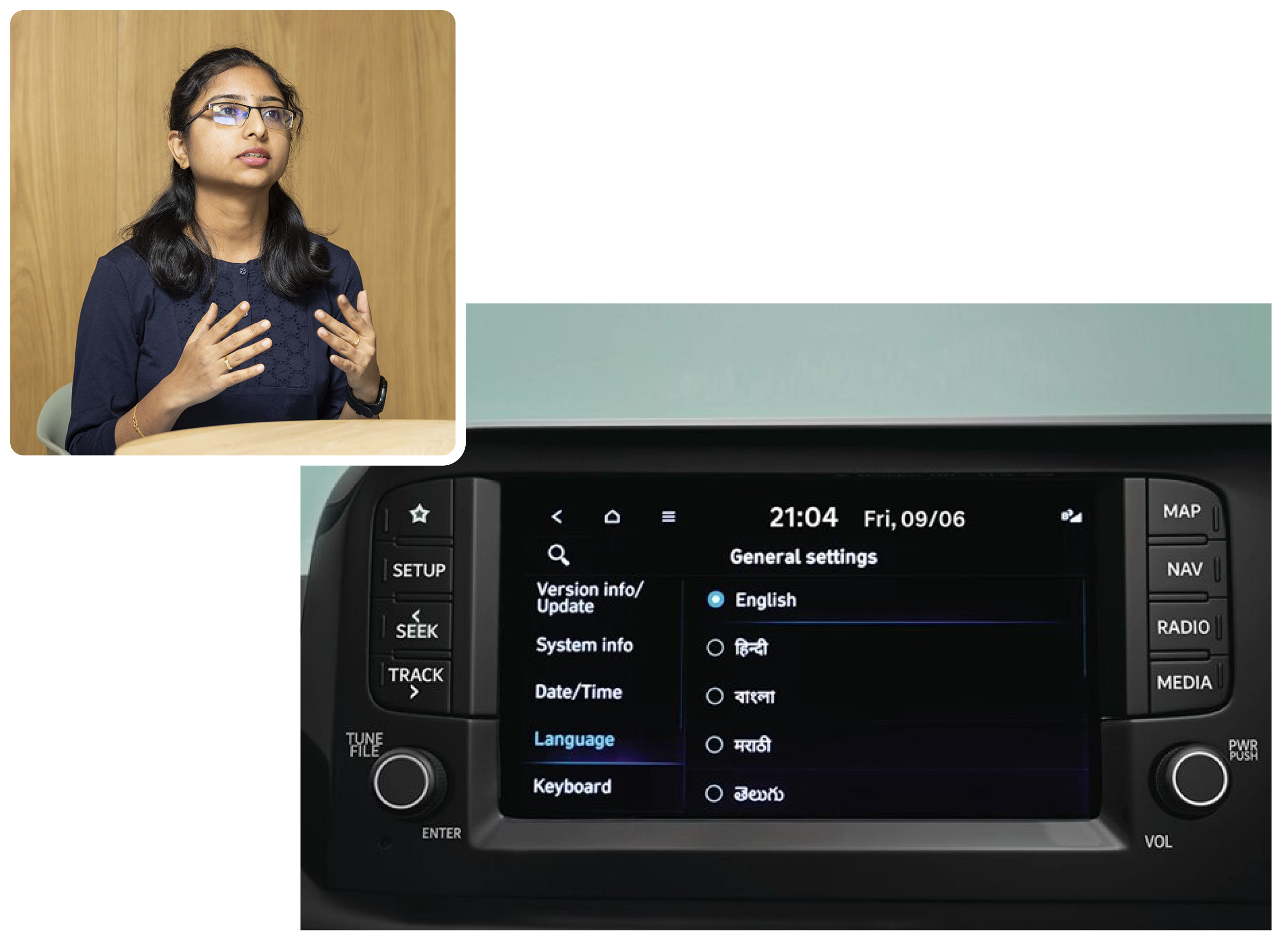
Q. India is home to many different languages and cultures within one country. How much of the overall localization work is in India, and what do you pay attention to during the UX writing process?
Sai Sravya, Research Engineer (HMIE, Hyundai Motor India Engineering) | As India continues to grow as a key emerging market, we’re revamping our infotainment system to optimize services for the country’s diverse languages and cultures. India is home to a wide variety of languages depending on the region, with 10 of the most common local languages being used in the infotainment system. That’s 1/5 of Hyundai Motor Group’s total multilingual work, and it’s a testament to our commitment to providing user-friendly technology that’s accessible to everyone in India. UX writers and designers at Hyundai Motor India Engineering are working to ensure that the text in these 10 local languages feels natural and not translated, as if you’re interacting with a local.
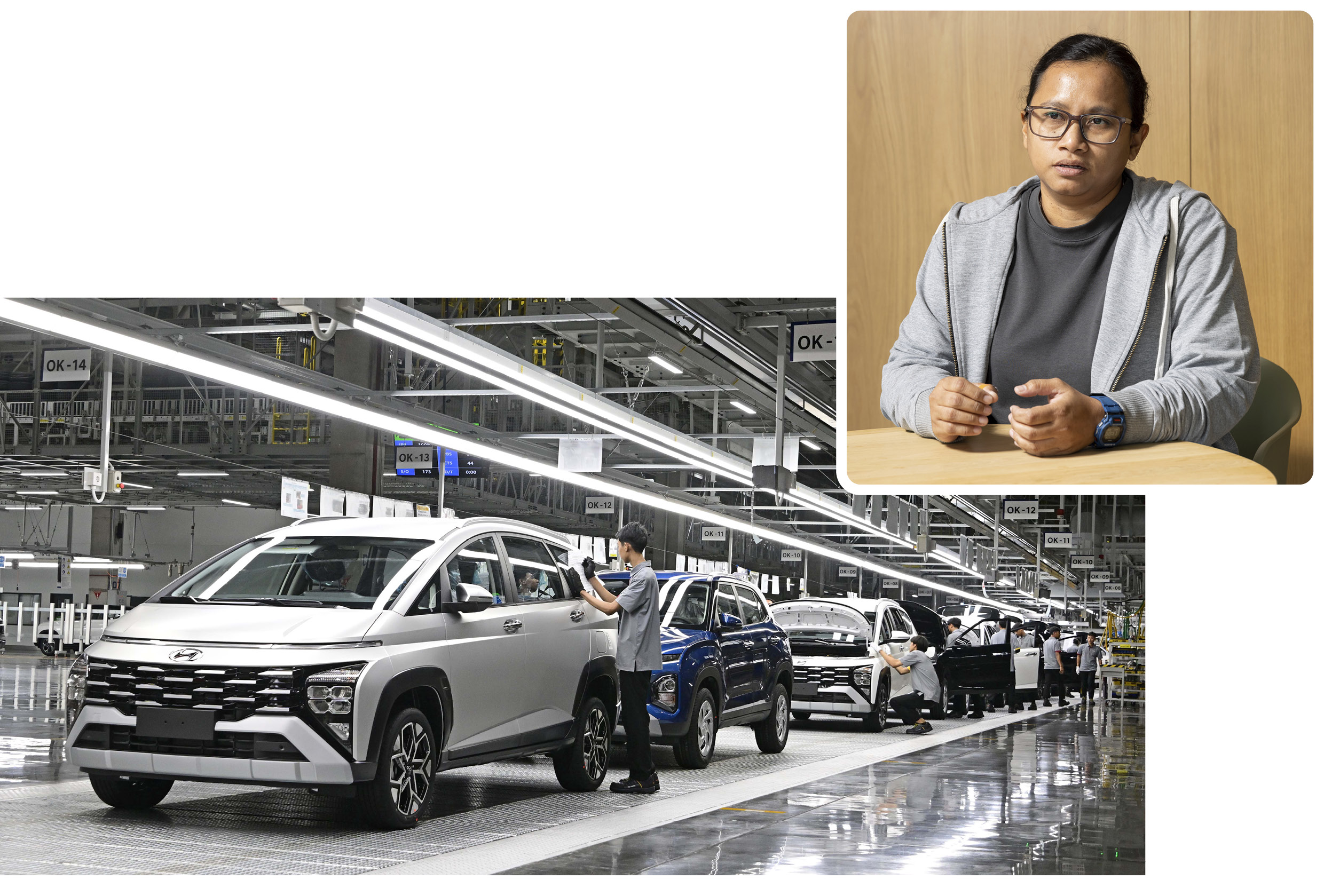
Q. I understand that Indonesia has a mobility innovation center in a local factory to work on UX localization. As a UX writer, how do you benefit from this process?
Nindya Widyastuti, Research Engineer (HMMI, Hyundai Motor Manufacturing Indonesia) | In Indonesia, our manufacturing plant takes charge of UX development. This means that we’re actively collaborating with the Quality Control Department and Sales Department, helping us to know whether the text we applied is conveying the right information and whether customers understand the text properly.
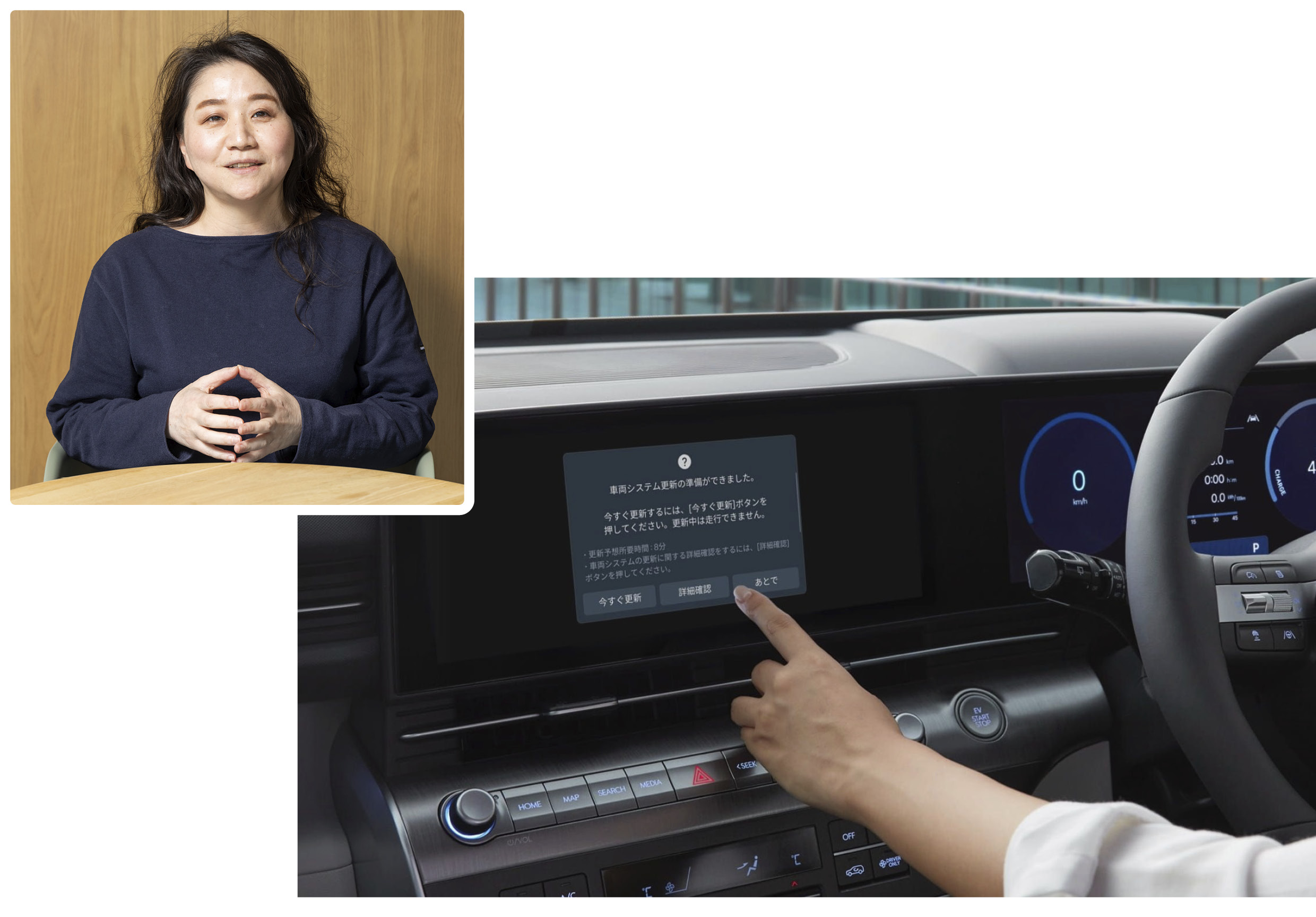
Q. Korea and Japan are similar in terms of culture and language, but I’m sure there are differences as well. How do you approach UX writing in Japanese?
Hiromi Tsuyuki, Research Engineer (HMJRD, Hyundai Mobility Japan R&D Center) | Korean and Japanese are similar in grammar and pronunciation, but these similarities can sometimes make it difficult to distinguish the actual language spoken by Japanese people. If you translate faithfully to the original Korean text, you may stray from expressions and words that are commonly used in Japan, and if you simply refer to the original text, you’ll lack consistency. It’s important to strike a balance between translation and validation. In addition, there are cases where words with the same meaning have a large difference in the number of characters between Korean and Japanese. In such cases, we replace these words with shorter ones that have similar meanings or choose Chinese characters that can be displayed in a shorter form.
Photography by Jin‑Ho Choi